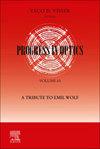Use of Raman Spectroscopy for Analysis and Detection of Some Sudanese Edible Oils
3区 物理与天体物理
Q1 Materials Science
引用次数: 0
Abstract
Vegetable edible oils provide high nutritional and health value in the Sudanese diet. It is also used in the pharmaceutical industry and an essential ingredient in cosmetics. This paper reviews the use of Raman spectroscopy for the analysis, quality and characterization of edible oils, including six types of oils (corn, extra virgin olive, sunflower, factory sesame, presses sesame, and peanut) purchased from local Sudanese stores. The results showed that the spectra of edible oils are similar, but they show some differences that, despite their smallness, allow them to be distinguished from each other. Divide the spectrum into the fingerprint region. The range ranges between (600 and 1800) cm-1 the silent region", this spectral region is (1800 to 2500) cm-1, and range is from (2500 to 3400) cm-1, known as the "high wave number region". Raman spectra also pliable the determination of the degree of saturation and unsaturation of oils. This characteristic is related to the value of iodine, and the degree of unsaturation can be used to classify and approve oils, which is especially useful with high-quality oils in the appearance of the vibration modes at 1155 cm-1 and 1525 cm-1. Adulteration of edible oils with cheaper oils is a major concern in the oil industry. The capabilities of a Raman spectrometer were checked to assess the purity of the samples (peanut spectrum and presses sesame spectrum). Raman spectroscopy allowed the examination of secondary components such as sterols, hydrocarbons, terpene alcohols and polyphenols. Raman spectroscopy is used because this innovative method provides fast, non-destructive and reagent-free measurements, samples do not need to be processed and do not require large volumes.用拉曼光谱法分析和检测苏丹食用油
植物油在苏丹人的饮食中具有很高的营养和健康价值。它也用于制药工业和化妆品的基本成分。本文综述了拉曼光谱在食用油分析、质量和表征中的应用,包括从苏丹当地商店购买的六种油(玉米、特级初榨橄榄油、葵花籽、工厂芝麻、压榨芝麻和花生)。结果表明,食用油的光谱是相似的,但它们也显示出一些差异,尽管它们很小,但可以相互区分。将光谱划分为指纹区域。其范围在“静默区”(600 ~ 1800)cm-1之间,此光谱区为“1800 ~ 2500”cm-1,而范围为“2500 ~ 3400”cm-1,称为“高波数区”。拉曼光谱也适用于油的饱和和不饱和程度的测定。该特性与碘值有关,不饱和程度可用于油的分类和鉴定,特别是在1155 cm-1和1525 cm-1的振动模式下,对优质油特别有用。在食用油中掺入廉价油是石油工业的一个主要问题。检查拉曼光谱仪的能力,以评估样品的纯度(花生光谱和压榨芝麻光谱)。拉曼光谱可以检测二级成分,如甾醇、碳氢化合物、萜烯醇和多酚。使用拉曼光谱是因为这种创新的方法提供了快速,非破坏性和无试剂的测量,样品不需要处理,也不需要大量。
本文章由计算机程序翻译,如有差异,请以英文原文为准。
求助全文
约1分钟内获得全文
求助全文

 求助内容:
求助内容: 应助结果提醒方式:
应助结果提醒方式:


